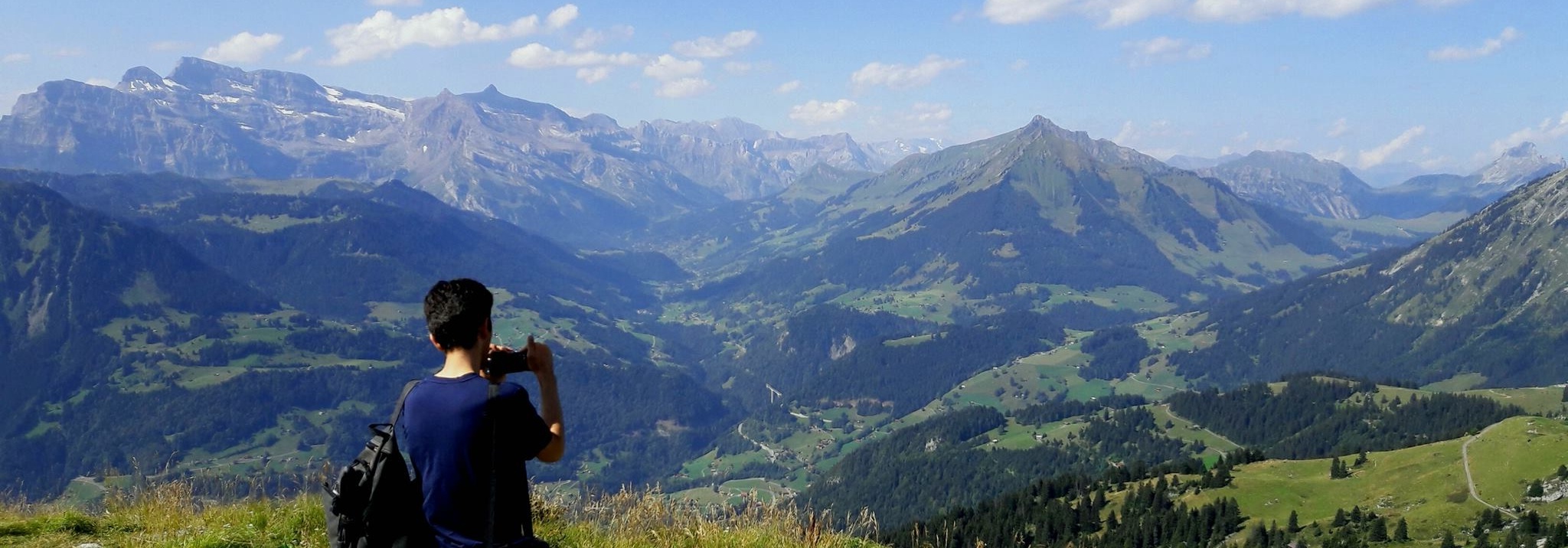Reaching Melbourne from Luxembourg required three long-distance flights, with around 25 hours spent in the air. It was worth crossing half of the earth to participate in the 30th edition of the Visible Evidence Conference at Monash University.
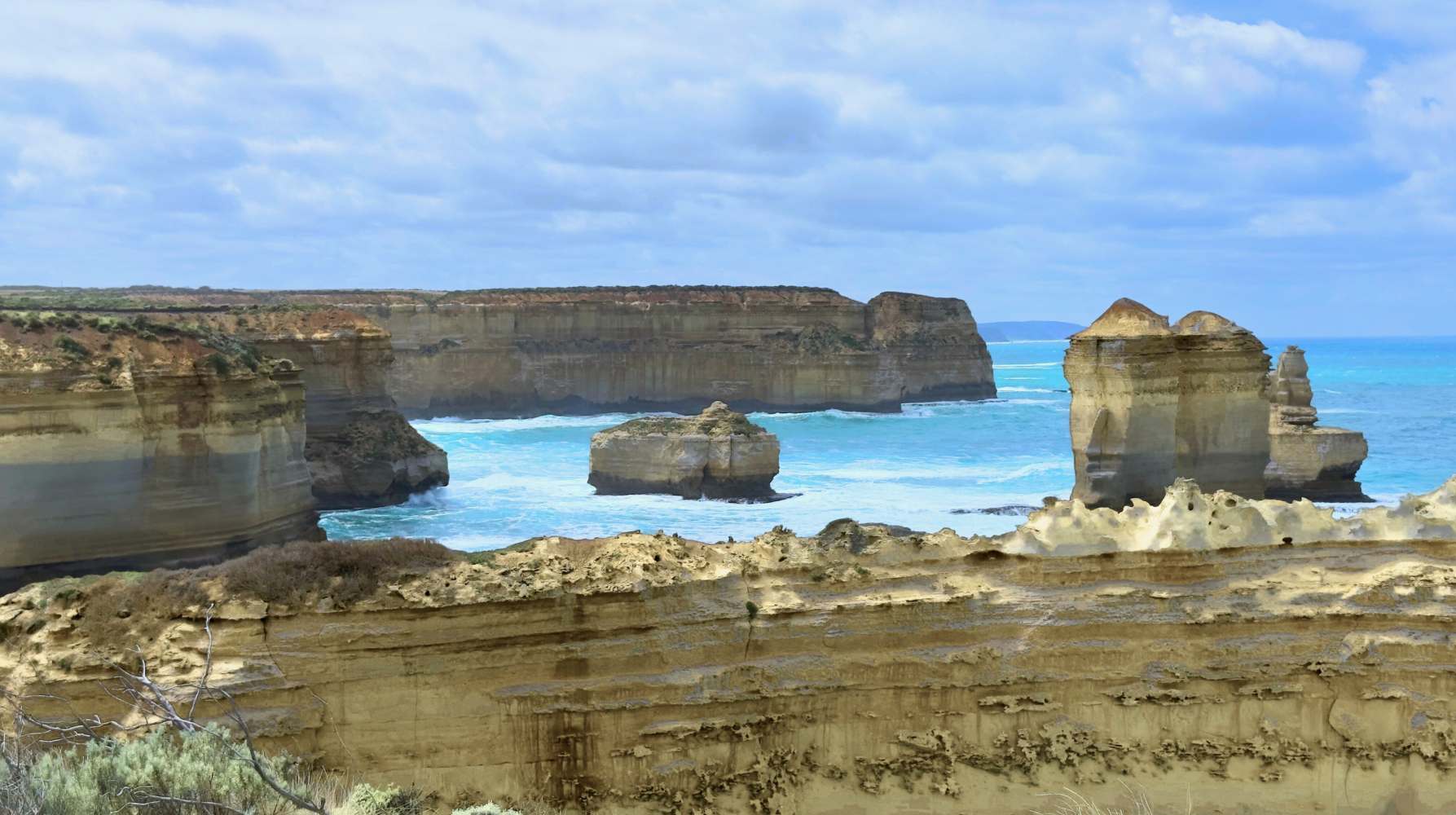
I would like to acknowledge the Traditional Owners of the land on which we were gathered during the conference VE, the Boon Wurrung people of the Kulin Nation. I pay my respects to their Elders past, present, and emerging, and I extend that respect to any Aboriginal and Torres Strait Islander people joining us today. This text was pronounced at the beginning of any event – from academic sessions to cultural gatherings.
As a person who was not informed deeply about the happenings in Australia against Aboriginal people, first I was surprised. Later I understood that this consistent act of remembrance was a poignant reminder of how history, when confronted honestly, can become a tool for preventing future injustices. In this manner, the conference opened with films by the Karrabing Film Collective, a grassroots Indigenous media group whose work sheds light on the struggles and resilience of First Nations communities. These films set a reflective and respectful tone for the entire event.
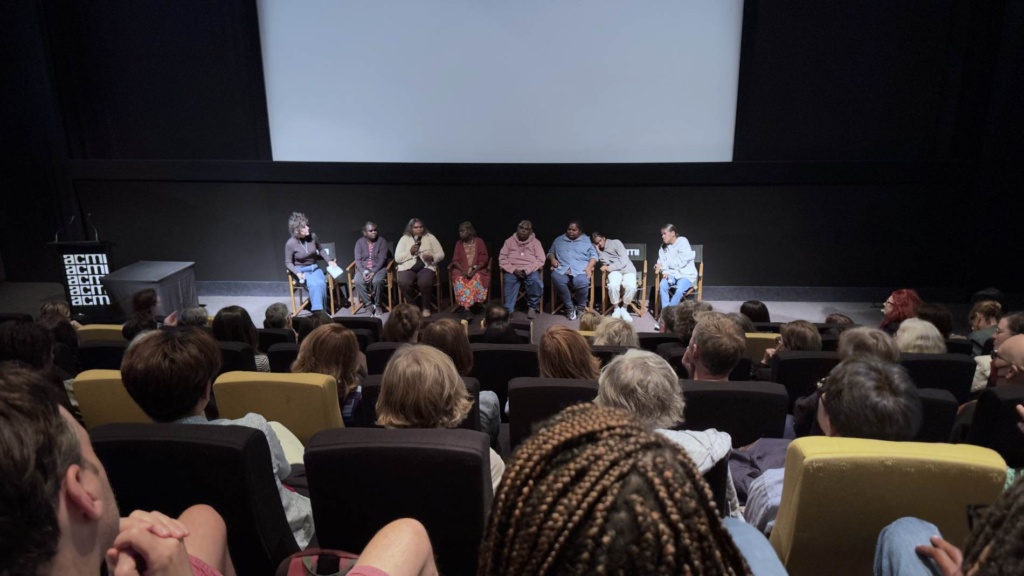
About the Event
Visible Evidence is one of the most significant academic gatherings dedicated to documentary film studies since 1993. Over the past 30 years it has provided a platform for scholars, filmmakers, and researchers to discuss, debate, and redefine the aesthetics, ethics, and impact of documentary cinema in different disciplines. In 2024 the VE conference took place at Monash University’s Caulfield Campus in Melbourne, Australia on December 17-20th.
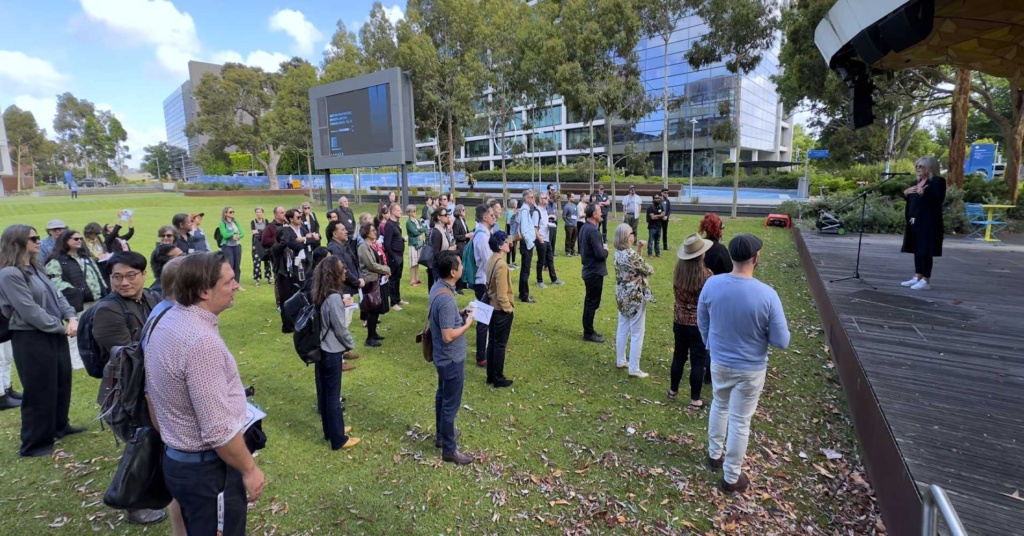
A Harvest of Knowledge and Inspiration
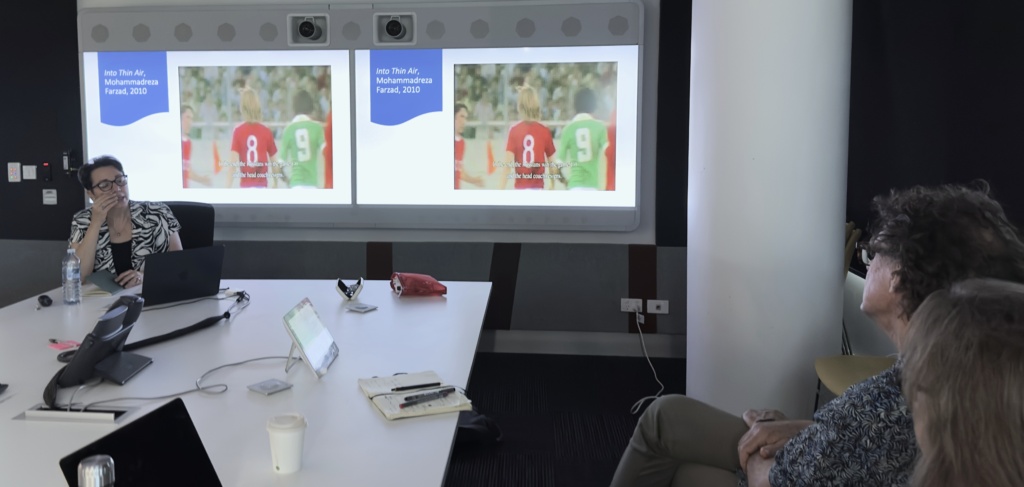
One of the highlights of my participation was the workshop titled The City Essay Film led by Laura Rascaroli from the University College of Cork, Ireland. This session offered new perspectives on how the relationship between the filmmaker and the filmed environment creates meaning. Rascaroli encouraged us to think about thought as a movement – a journey, a weaving of ideas, helping me conceptualize a fresh direction for my PhD research. Specifically, I began developing a paper on the creative means of materialization of the inner dynamics in documentary films.
The conference also exposed me to the ideas of leading scholars in the field. World-renowned documentary film scholar Michael Renov, one of the founding figures of Visible Evidence, made a thought-provoking remark – the documentary was largely ignored in the 1970s because it was perceived as being too human-centric. This statement resonated with me deeply, particularly in light of current shifts in the representation of documentary cinema regarding funding policies and digital on-demand services.
To my great surprise, Armenian films were featured prominently in two conference presentations. Julia Vassilieva from Monash University discussed Artavazd Pelechian: “Nature”, Machine Vision, and Algorithmic Sensibility, highlighting how the legendary Armenian filmmaker’s poetic approach challenges conventional modes of perception. Meanwhile, Vlada Lodesk from the University of Southern California referenced the film Stone, Time, Touch by Canadian-Armenian filmmaker Garine Torossian in her presentation on Haptic Visuality in Nonfiction. Seeing Armenian filmmakers recognized in an international academic setting was both inspiring and reaffirming.
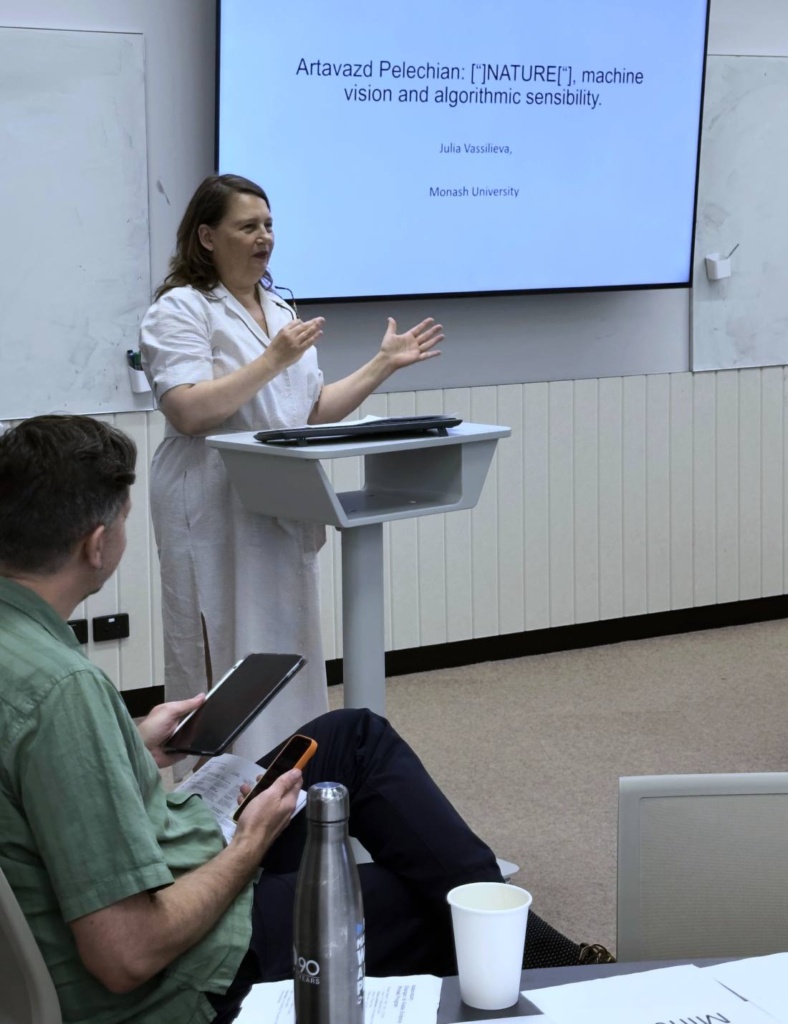
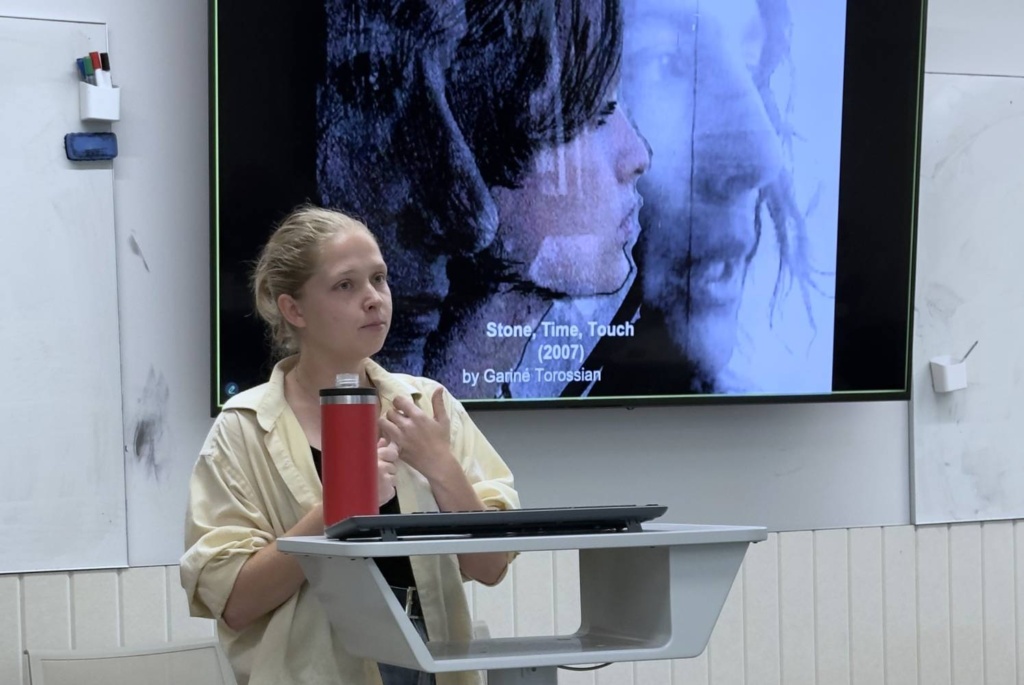
My Research: Challenging Documentary Aesthetics
As part of the conference, I presented my research titled Redefining Traditional Aesthetic Norms in Documentary Cinema Through Experimentation and Innovation in Narrative Structure and Storytelling Techniques. My study examines the evolving aesthetics of interactive documentaries.
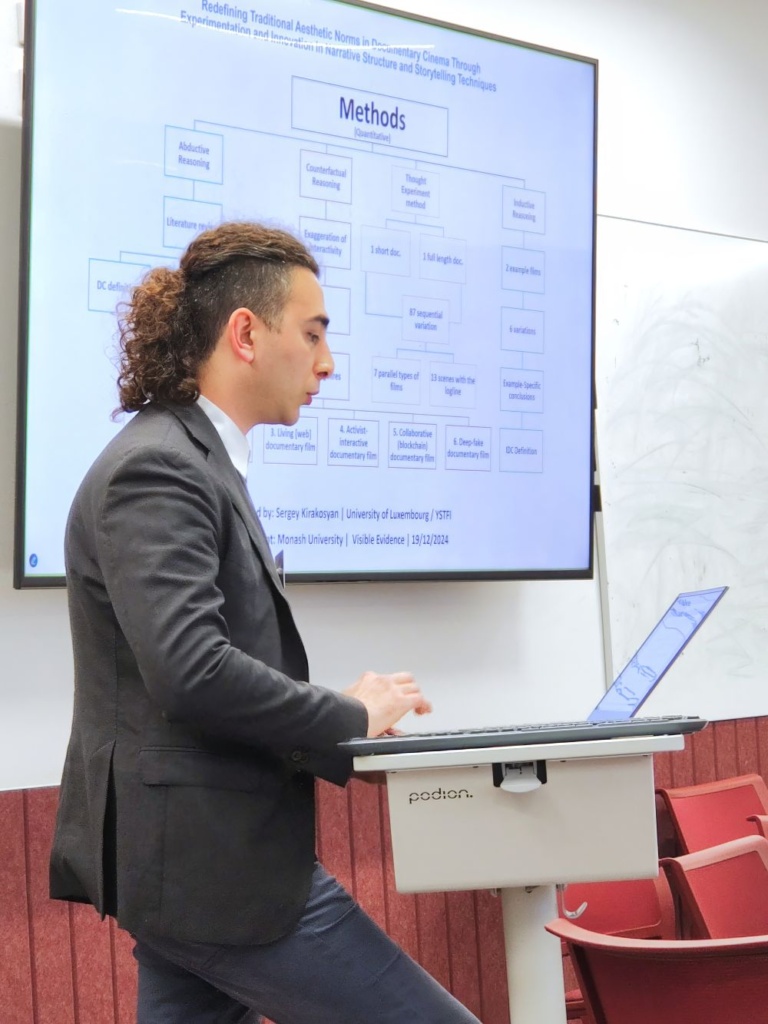
One of my key arguments is that interactive documentaries should not be seen merely as digital extensions of traditional documentary cinema but as a distinct artistic form with its own aesthetic principles. To explore this, I conducted an experiment based on one Armenian (“The Subscriber Is Temporarily Unreachable” 2014, 21:59) by Arman Yeritsyan) and one Luxembourgish (“The Invitation” 2022, 78:55 by Fabrizio Maltese) documentary film, exaggerating the interactivity of the medium using techniques that are currently beyond the reach of available technology. By integrating these thought experiments with my research findings, I sought to clarify the aesthetic characteristics of both traditional and interactive documentary cinema, taking into account contemporary advancements such as deepfakes.
Ultimately, my research proposes new definitions for documentary and interactive documentary cinema, grounded in a balance between technological possibilities and the philosophical essence of nonfiction storytelling. The discussion following my presentation was engaging, with scholars showing keen interest in my theoretical framework. Their feedback provided valuable insights that will help refine my work further.
Final Thoughts and Gratitude
Reflecting on my experience at Visible Evidence 2024, I see it not just as a conference, but as a convergence of minds dedicated to exploring the power of documentary cinema. It reinforced my belief that storytelling – whether through traditional or interactive forms – remains one of the most potent tools we have to understand.
Beyond the intellectual stimulation, the conference allowed me to form meaningful connections with professors, doctoral researchers and documentary filmmakers from across the globe. These interactions will undoubtedly have a long-term impact on my career. So I am grateful to the Doctoral School in Humanities and Social Sciences (DSHSS) at the University of Luxembourg for providing financial support for my participation. I also extend my deepest appreciation to my doctoral supervisor Dr. Gian Maria Tore whose critical guidance is invaluable in shaping my academic journey.
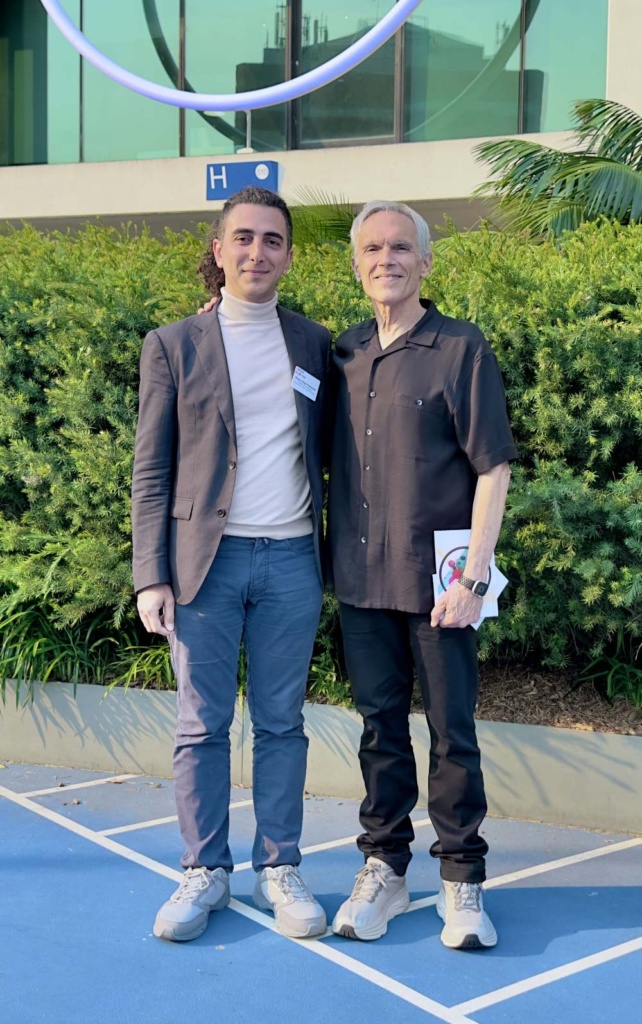
I hope one day to see one of the biggest documentary cinema annual academic conferences in the world hosted in Luxembourg by the University of Luxembourg or in Yerevan by the Yerevan State Film and theatre Institute.
Seg Kirakossian
Doctoral Researcher at the University of Luxembourg
